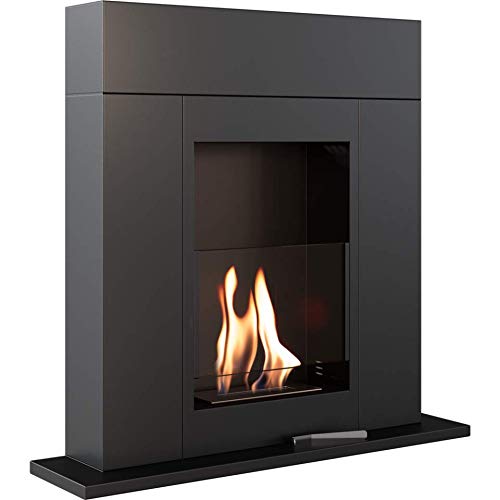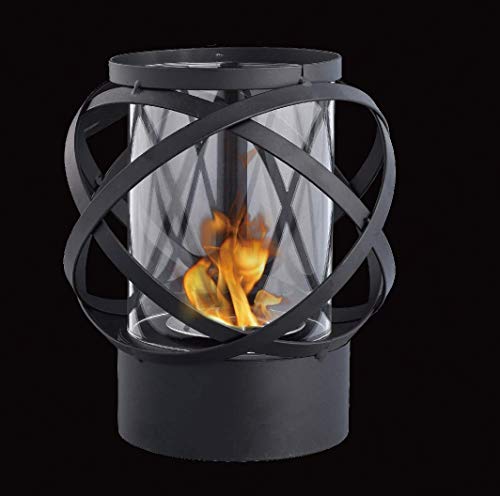9 . What Your Parents Teach You About Biofireplace
관련링크
본문
What is a Biofireplace?
Bio fires differ from traditional fireplaces as they burn a liquid fuel called bioethanol. This fuel is a sustainable, green energy source which creates clean heat without any smoke or ash.
The burners in a biofireplace are encased in non-combustible materials, commonly called ceramic fibre. This prevents the flames from coming into contact with the liquid fuel, and also protects the biofireplace from accidental spills or overloading.
The portal type
A portal biofireplace is the most popular type of ecological fireplace. It is simple and easy to move and install in a new location. It can be used for any living spaces. The process of burning is free of harmful substances and is safe. It doesn't produce smoke or ash, and doesn't require a chimney. It also does not require electricity, making it a great alternative to traditional fireplaces.
The bio fireplace can be purchased as a wall-mounted or freestanding unit. It is designed to look just like the real wood burning fireplace. These fireplaces are a great option to decorate your home, and they can warm the room and also provide a real fire. They can also be a good alternative to an outdoor fireplace in a terrace or garden. But, before you purchase one of these fireplaces, ensure that it's safe for pets and children. The glass surface of a portal biofireplace is toughened and can stand up to high temperatures. It is impervious to smudges and scratches, and therefore won't be easily damaged.
The burner is the primary component of the bio-fireplace. It consists of a metal burner or ceramic burner with an opening for flames. The fuel is placed into tanks and the fireplace heats it to create a fire. This flame can be controlled using the tool included with the fireplace. The tank for fuel can be opened and filled from the bottom, which means there is no need to unplug the burner from its housing.
ethanol fireplace insert is a fireplace fuel made from a natural alcohol substance that can be extracted from a variety of sources including commercial and agricultural waste. This fuel is used to heat the home and offers numerous health benefits. It can aid in weight loss as well as improve blood circulation and many more. It is important to choose the correct fuel for your eco fireplace as some types may not burn properly.
A biofireplace does not produce any smoke or ash, and it doesn't require an electrical connection, so you can save money on energy. It is also easier to utilize than traditional fireplaces, and doesn't require a chimney or canopy. Additionally, it is easy to move, and you can even carry it along when you move.
The table type
A bio fireplace is a device that burns bioethanol. It is constructed of materials that resist heat and can be installed in a room. It comes with an engine and tank, along with the control block. The tank is a porous insert that absorbs biofuels and stops spillage in the event of an accidental overturn. The burner is a ceramic circular cylinder that forms the fire line. It can be any shape or size but it should not be more than half of the tank volume. The control block is a mechanical semi-automatic or automatic device that controls the operation of the burner.
 A bio fireplace is an excellent alternative to traditional fireplaces or stoves. It doesn't require an extractor hood, chimney, and its combustion process is totally pure. The burner burns the fuel, which releases only carbon dioxide and water. This makes it an eco friendly alternative to wood-burning stoves and fireplaces. It is also much simpler to use than a fireplace, since it doesn't require maintenance of chimneys or laundering multi-layer soot.
A bio fireplace is an excellent alternative to traditional fireplaces or stoves. It doesn't require an extractor hood, chimney, and its combustion process is totally pure. The burner burns the fuel, which releases only carbon dioxide and water. This makes it an eco friendly alternative to wood-burning stoves and fireplaces. It is also much simpler to use than a fireplace, since it doesn't require maintenance of chimneys or laundering multi-layer soot.
The fuel used in a bio fireplace is specially designed for the device. It is made from vegetable crops with high sugar content. For instance, beets as well as cane are commonly used. Bioethanol is a non-toxic substance that is free of toxic chemicals. When it burns, it does not produce sparks smoke, or soot. However, it does produce a small amount carbon dioxide and water vapor.
Based on the model, a biofireplace can consume between 250 and 500 ml of fuel an hour. The smaller models, like the table biofireplace, only consume 200 ml of fuel. This type of fireplace is ideal for apartments and homes with smaller spaces. It can be built into furniture or placed on the desk.
A table-top biofireplace is placed on a desktop or in a corner of an area. It is small and easy to set up. It is beautiful and does not require a power source. It is also simple to use since it can be operated using the simple button for control.

Bio fires differ from traditional fireplaces as they burn a liquid fuel called bioethanol. This fuel is a sustainable, green energy source which creates clean heat without any smoke or ash.
The burners in a biofireplace are encased in non-combustible materials, commonly called ceramic fibre. This prevents the flames from coming into contact with the liquid fuel, and also protects the biofireplace from accidental spills or overloading.
The portal type
A portal biofireplace is the most popular type of ecological fireplace. It is simple and easy to move and install in a new location. It can be used for any living spaces. The process of burning is free of harmful substances and is safe. It doesn't produce smoke or ash, and doesn't require a chimney. It also does not require electricity, making it a great alternative to traditional fireplaces.
The bio fireplace can be purchased as a wall-mounted or freestanding unit. It is designed to look just like the real wood burning fireplace. These fireplaces are a great option to decorate your home, and they can warm the room and also provide a real fire. They can also be a good alternative to an outdoor fireplace in a terrace or garden. But, before you purchase one of these fireplaces, ensure that it's safe for pets and children. The glass surface of a portal biofireplace is toughened and can stand up to high temperatures. It is impervious to smudges and scratches, and therefore won't be easily damaged.
The burner is the primary component of the bio-fireplace. It consists of a metal burner or ceramic burner with an opening for flames. The fuel is placed into tanks and the fireplace heats it to create a fire. This flame can be controlled using the tool included with the fireplace. The tank for fuel can be opened and filled from the bottom, which means there is no need to unplug the burner from its housing.
ethanol fireplace insert is a fireplace fuel made from a natural alcohol substance that can be extracted from a variety of sources including commercial and agricultural waste. This fuel is used to heat the home and offers numerous health benefits. It can aid in weight loss as well as improve blood circulation and many more. It is important to choose the correct fuel for your eco fireplace as some types may not burn properly.
A biofireplace does not produce any smoke or ash, and it doesn't require an electrical connection, so you can save money on energy. It is also easier to utilize than traditional fireplaces, and doesn't require a chimney or canopy. Additionally, it is easy to move, and you can even carry it along when you move.
The table type
A bio fireplace is a device that burns bioethanol. It is constructed of materials that resist heat and can be installed in a room. It comes with an engine and tank, along with the control block. The tank is a porous insert that absorbs biofuels and stops spillage in the event of an accidental overturn. The burner is a ceramic circular cylinder that forms the fire line. It can be any shape or size but it should not be more than half of the tank volume. The control block is a mechanical semi-automatic or automatic device that controls the operation of the burner.
 A bio fireplace is an excellent alternative to traditional fireplaces or stoves. It doesn't require an extractor hood, chimney, and its combustion process is totally pure. The burner burns the fuel, which releases only carbon dioxide and water. This makes it an eco friendly alternative to wood-burning stoves and fireplaces. It is also much simpler to use than a fireplace, since it doesn't require maintenance of chimneys or laundering multi-layer soot.
A bio fireplace is an excellent alternative to traditional fireplaces or stoves. It doesn't require an extractor hood, chimney, and its combustion process is totally pure. The burner burns the fuel, which releases only carbon dioxide and water. This makes it an eco friendly alternative to wood-burning stoves and fireplaces. It is also much simpler to use than a fireplace, since it doesn't require maintenance of chimneys or laundering multi-layer soot.The fuel used in a bio fireplace is specially designed for the device. It is made from vegetable crops with high sugar content. For instance, beets as well as cane are commonly used. Bioethanol is a non-toxic substance that is free of toxic chemicals. When it burns, it does not produce sparks smoke, or soot. However, it does produce a small amount carbon dioxide and water vapor.
Based on the model, a biofireplace can consume between 250 and 500 ml of fuel an hour. The smaller models, like the table biofireplace, only consume 200 ml of fuel. This type of fireplace is ideal for apartments and homes with smaller spaces. It can be built into furniture or placed on the desk.
A table-top biofireplace is placed on a desktop or in a corner of an area. It is small and easy to set up. It is beautiful and does not require a power source. It is also simple to use since it can be operated using the simple button for control.


